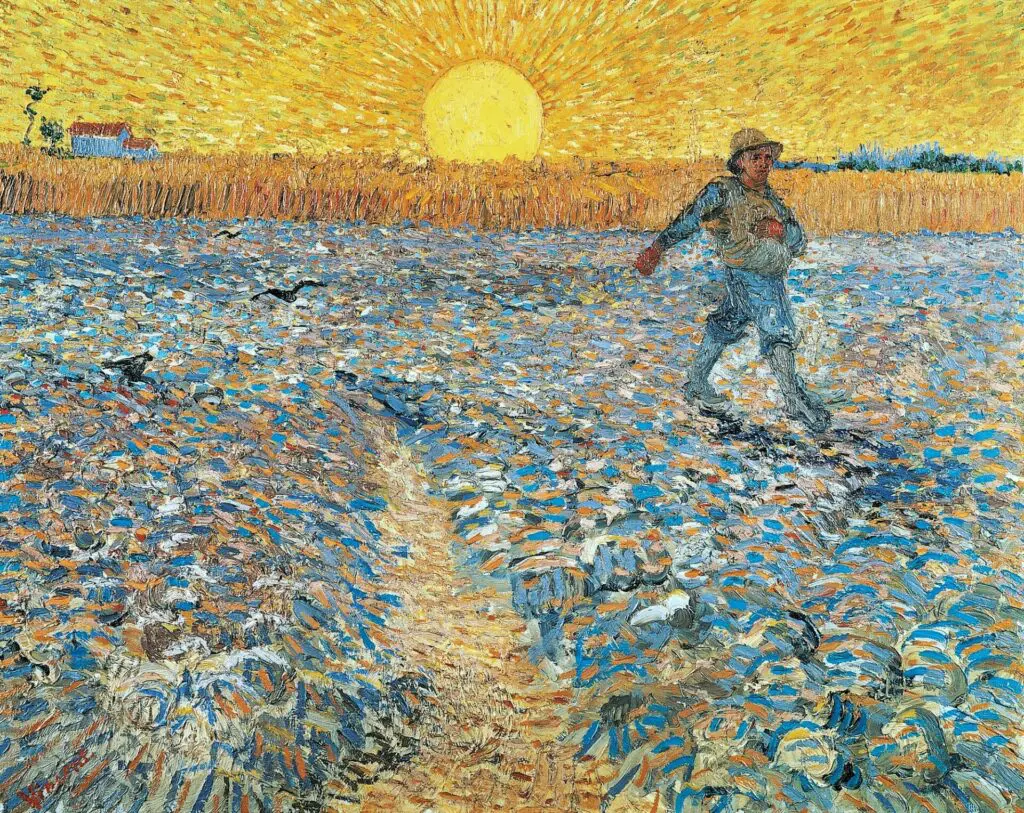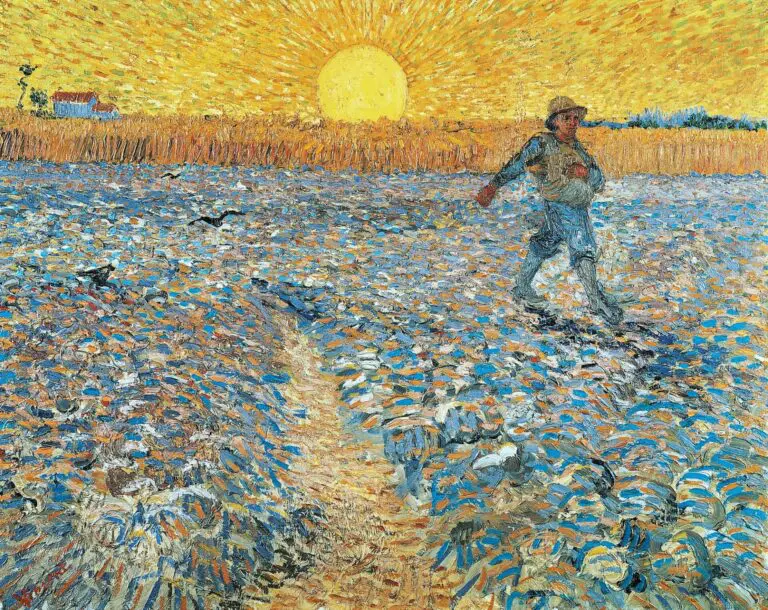The Sower
The Sower is a powerful depiction of a farmer scattering seeds, set against a golden, setting sun that fills the sky with a radiant glow. With deep, expressive colors and bold lines, Van Gogh captures the rhythm of rural life and humanity’s connection to nature. The sower, silhouetted against the horizon, exudes strength and resilience, echoing themes of growth, perseverance, and hope—a beautiful tribute to the working class that fascinated Van Gogh throughout his life.
1888
About the Artwork
Van Gogh painted The Sower in 1888 while in Arles, inspired by the wheat fields and farmlands surrounding him. This piece was also influenced by the works of Jean-François Millet, whom Van Gogh admired for his depictions of rural life. Van Gogh saw the sower as a symbol of renewal, inspired by his belief that nature held a profound, almost spiritual significance.
Van Gogh’s focus on the sower came from his deep empathy for the hardworking farmers he observed. The radiant sky and expressive brushstrokes convey both the harshness and beauty of a farmer’s life. Van Gogh’s fascination with this theme continued throughout his life, as he found a sense of hope in the act of planting seeds for the future. Despite his own struggles, The Sower became a visual metaphor for resilience and hope, embodying his dreams of growth and renewal amid life’s hardships. This painting remains one of Van Gogh’s most celebrated works, revered for its bold colors and the emotional depth it conveys.










